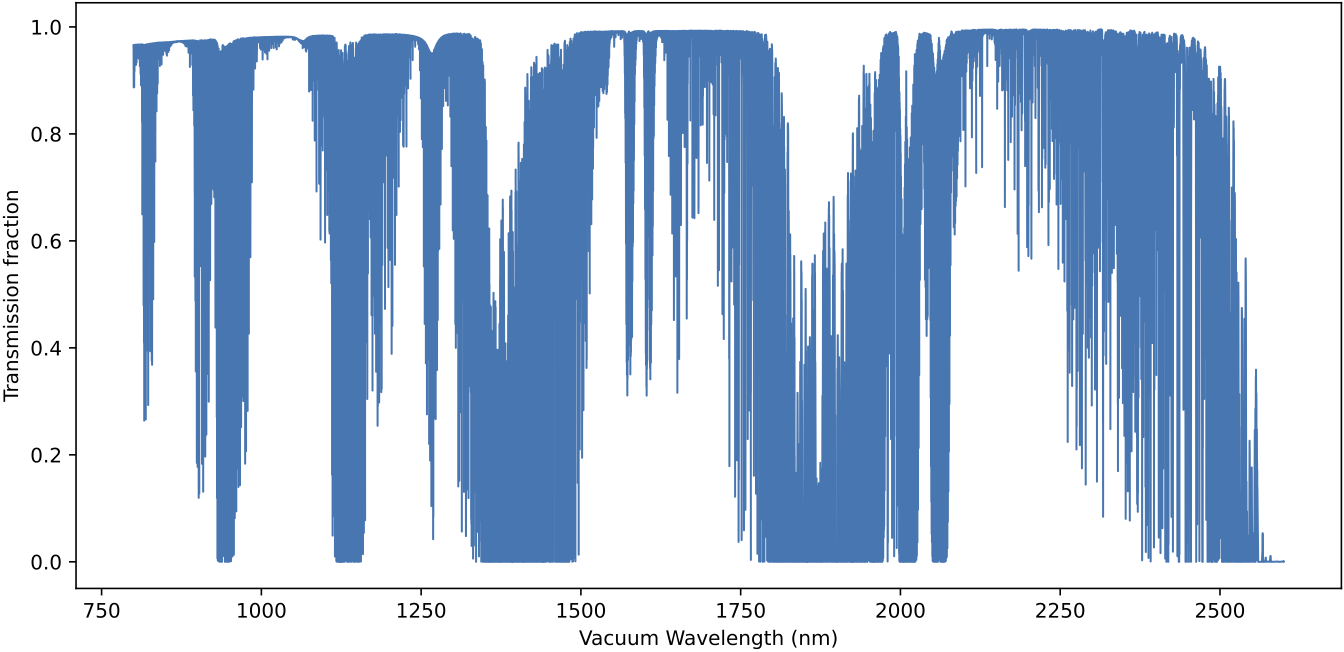Script arguments
The megaradrp-ifu_simulator accepts a number of arguments. A quick list and
explanation can be easily obtained using the --help (-h for short)
argument.
(venv_frida) $ fridadrp-ifu_simulator --help
An additional description of the different arguments is provided below.
Warning
As the code is still under development, some of the arguments shown below are not fully functional and only support some of the possible values. In such cases, an explanatory note is included.
--scene <string>
External YAML file where the user defines one or several sources to be simulated. Each source has an associated spectrum.
--flux_factor <string>
Multiplicative factor (float number) to be applied to the number of photons defined in the scene file. The resulting number is rounded to an integer value.
--grating <string>
Grating name. It should be one of the following: low-zJ, low-JH,
medium-z, medium-J, medium-H, medium-K, high-H or
high-K.
Note: at present only the medium-K has been properly defined.
--scale <float>
Camera scale. It should be one of the following: fine (0.01 arcsec/pixel),
medium (0.02 arcsec/pixel) or coarse (0.04 arcsec/pixel).
--ra_teles <float>, --dec_teles <float>
Central coordinates (right ascension and declination) of the Field of View. By default these values are set to \({\rm RA}=0.0~{\rm deg}\) and \({\rm DEC}=0.0~{\rm deg}\). These coordinates must be expressed in decimal degrees.
--delta_ra_teles_arcsec <float>, --delta_dec_teles_arcsec <float>
Additional offset in right ascension and declination in arcseconds. These parameters allow simulating small shifts in the telescope pointing using units closer to the FRIDA IFU’s field of view.
--seeing_fwhm_arcsec <float>, --seeing_psf <string>
FWHM of the seeing, in arcseconds, and mathematical function to reproduce the seeing.
Note: so far only --seeing_psf gaussian has been defined.
--instrument_pa_deg <float>
Instrument position angle (degrees), measured North through East.
--airmass <float>
Airmass. If this value is > 1.0, it is employed to compute the atmospheric differential refraction (ADR) as a function of wavelength, using Eq. (1)-(3) in Filippenko (1982).
The ADR effect is computed determining the difference in the refraction angle of each simulated photon computed at its simulated wavelength and at the central wavelength of the simulated data cube.
By default --airmass 1.0 and no ADR effect is computed unless a different
value is specified.
--parallactic_angle_deg <float>
Parallactic angle (degrees). This value is employed to compute the atmospheric differential refraction when airmass > 1.0 (see above).
--noversampling_whitelight <integer>
Oversampling factor to generate one of the white-image views of the simulated 3D data cube. The simulator generates two versions of the white-image view:
file
test_ifu_white2D_method0_os1.fits: 2D projection of the 3D data cube usingNAXIS1=64andNAXIS2=60. This sampling is close to the actual sampling at the Hawaii detector, in which each slice spreads ~64 pixels in the spatial direction, and 2 pixels in the wavelength axis. Since the FRIDA’s IFU is covered by 30 slices, this means that there are \(2 \times 30 = 60\) pixels in direction of the IFU perpendicular to the slices.file
test_ifu_white2D_method0_os10.fits: oversampled 2D projection of the 3D data cube, using the chosen oversampling number. By default--noversampling_whitelight 10is employed, which means that each IFU pixel is subdivided in \(10 \times 10\) subpixels. In this case, the while-light image dimension is given byNAXIS1=640andNAXIS2=600. This version of the white-light image can help to check how well a combination of IFU exposures are coadded when using a dithering technique with non-integer offsets (in pixel units).
--atmosphere_transmission <[default] | none>
The default value makes use of the predicted transmission fraction of the
atmosphere obtained with SKYCALC Sky Model Calculator
(version 2.0.9) using the default input parameters for the model. The
prediction is stored in the file skycalc_800-2600nm_step0_01nm.fits, which
is one of the auxiliary files automatically downloaded in a cache directory the
first time fridadrp-ifu_simulator is executed. This file contains not only
the atmosphere transmission, but also the sky emission radiance flux (in
ph/s/m2/micron/arcsec2), for the wavelength range from 800 to 2600 nm, with a
sampling of 0.01 nm.
A plot of the atmosphere transmission data is shown below.

When executing fridadrp-ifu_simulator, the atmospheric transmission
probability at the wavelength of each simulated photon is evaluated, and a
random number between 0 and 1 is generated in each case. If the obtained number
is greater than the transmission probability, the photon is discarded.
--rnoise <float>
Readout noise (positive number or zero) to be added to the simulated data (in ADU). By default this parameter is set to zero.
--flatpix2pix <[default] | none>
The default value makes use of a predefined flatfield image stored in one of
the auxiliary files automatically downloaded in a cache directory the first
time fridadrp-ifu_simulator is executed. The name of this type of file has
the form simulated_flat_pix2pix_<grating>.fits, where <grating> is the
grating name.
--spectral_blurring_pixel <float>
Extra degradation to be introduced in the spectral direction to each simulated
photon. In particular, a Gaussian random shift is applied (in pixel units) when
converting the original 3D data cube into the original 2D RSS image. The value
of this parameter provides the standard deviation of the Gaussian distribution.
By default, spectral_blurring_pixel = 1.0.
--seed <integer>
Seed to initialize the Numpy Random Generator. By default is
set to a particular integer sequence (1234).
--prefix_intermediate_FITS <string>
Prefix to be added before the name of the FITS files generated during the
simulator execution. By default this string is test. Note that an
underscore _ symbol is also added between this prefix and the filename.
--stop_after_ifu_3D_method0
If this argument is present, the simulator stops just after generating
the file test_ifu_3D_method0.fits. This is useful for debugging
purposes.
--verbose
If this argument is present, additional information is displayed in the terminal while executing the code.
--plots
When this argument is present, intermediate plots are also displayed.
--echo
Display in the terminal the command line employed to invoke the execution of the simulator.
--version
Display the code version number.